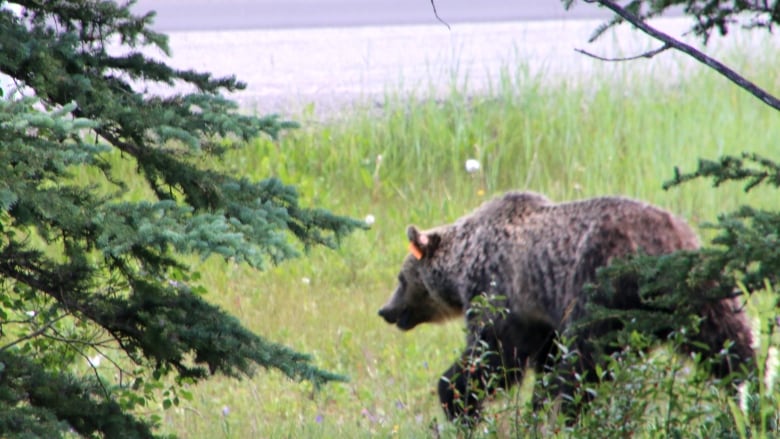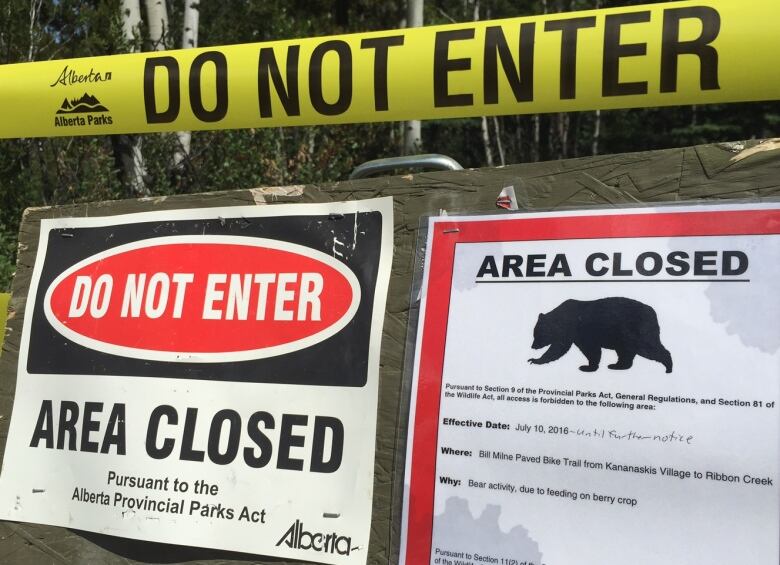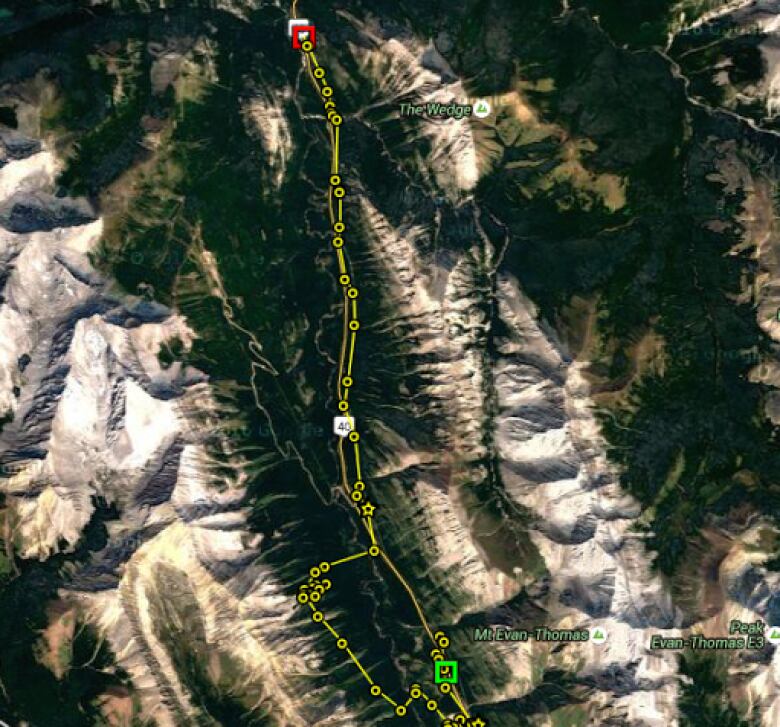Kananaskis bear aversion team kept busy this summer
Wildlife technicians say there are more bears and tourists this season

As the branches on a tall bush across the road start to shake, park ecologist John Paczkowski lowers his handheld radio tracking antenna.
It's now obvious where Bear 164 is headed.
"We're going to see him in a few seconds," he whispers.
- 'I'm going to get killed here': Man recounts grizzly attack near Calgary
- Another Alberta bear attack sends woman to hospital
And sure enougha young adult grizzly with brown and blondcolouring soon breaks cover nearly 100 metres down the road and crosses with just a casual glance towards the humans before he re-enters the forest.
You get a sense that everyone herethe trackers and the tracked has been through this routine before.
A few seconds after the bear disappears into the bushes, a cyclist speeds by that spot completely unaware of what unfolded along this road nearKananaskisVillage.
"He didn't even know he was there, so he's a pretty stealthy bear.That's perfect.That's the kind of behaviour we want," saidPaczkowski.
Tracking the bears
It's been a busy day for Bear 164.A few hours earlier, park staff received a call from two hikers who said the grizzly passed within a couple of metres of them on a nearby trail.
He didn't show aggression, both parties simply moved on.

Paczkowski has been tracking the bearwhich was collared this springall afternoon with wildlife technician Robin Baron.
They're part of the Alberta Environment and Parksbear aversion team in Kananaskis Country.
The team keeps tabs on 10radio-collared grizzlies and thanks to a healthy berry crop in the mountains this year and a steady stream of touriststhey say it's been a busy summer.
"We're seeing record numbers of visitors on our trails, by our rivers and in our day use areas all over the place, and they're having to mix with a lot of bears."
Those collared bears were partly chosen because they appeared to spend more time around campgrounds and park facilities than other bears.
Provincial officials say Kananaskis Emergency Services has received 801 reports of bears in the Kananaskis region so far this year and wildlife staff have conducted nearly 400 aversive conditioning actions over the same period.
2 technicians this year
It's the first year the province has hired two full-time wildlife technicians for the bear aversion team to provide dawn-to-dusk coverage in K-Country.
Robin Baron and another technician monitor the collared grizzly bears with radio and GPS technology and map their movements through the mountains.

"When bears go into campgrounds, that's really the most dangerous place if they start getting fed and becoming habituated to people," saidBaron as she keeps an eye down a cutline near the spot where Bear 164 disappeared.
When required, the technicians may intervene to try to change bear behaviour.Aversion strategies include yelling at the animals as well as using bear bangers, paint guns with rubber projectiles and even shotguns that fire bean bags or rubber bullets in more extreme cases.
Along the highways they also break up bear jams when tourists stop to watch the wildlife.Baron says those parked vehicles pose more of a threat to people than animals.
"I do want them to see a bear, but I ask them to take a quick look and move along," she said.
Busy summer
Conservation officer Nick Dykeshoorn says they have had a busy summer as well and that the aversion team has helped take some of the work off their plates.
"It's really important that we don't get any of those bears getting used to being that close to humans."

Dykeshoorn supervises the aversion team in K-Country.He says some visitors still need to learn about the risks in bear country.
"We give a ton of tickets for uncontained food and dogs off leash," he says.
John Paczkowski says the berry crop camein two weeksearlier than usual this year and the bears are focused on fattening up.
"We're going to see bears following that ripening path of berries up the valley. We're going to see a lot of bears down in the valley bottoms where the people are, and we're going to have to be vigilant to make sure that everyone stays safe."
Safety first
But despite the potential for trouble, Paczkowski says they haven't seen a rise in bear-versus-human conflicts in K-Country so far this year but there havebeen two bear attacks this week.

- Banff Bear 122 unafraid of railways, even after being hit by train
- Bear 122 caught on camera after coming out of hibernation
Back on the road near Kananaskis Village the action isn't over.
Paczkowski and Baron are surprised to see a mule deer race out of the trees with Bear 164 close on its heels.It's a short and half-hearted chase as the deer gets away.
The bear moves on and crosses another road.Two pickup trucks stop to look.One of the drivers gets out.Baron pulls up and advises him to return to his truck.
John Paczkowski says the goal is to keep both humans and bears safe.He says it's working, and adds that they have high hopes for Bear 164.
"He's still pushing the boundaries like any teenager will do or any young adult will do, so we're hoping to keep him on the right path and quite often, once they get a little older, we just don't see them anymore."













_(720p).jpg)


 OFFICIAL HD MUSIC VIDEO.jpg)
.jpg)



























































































